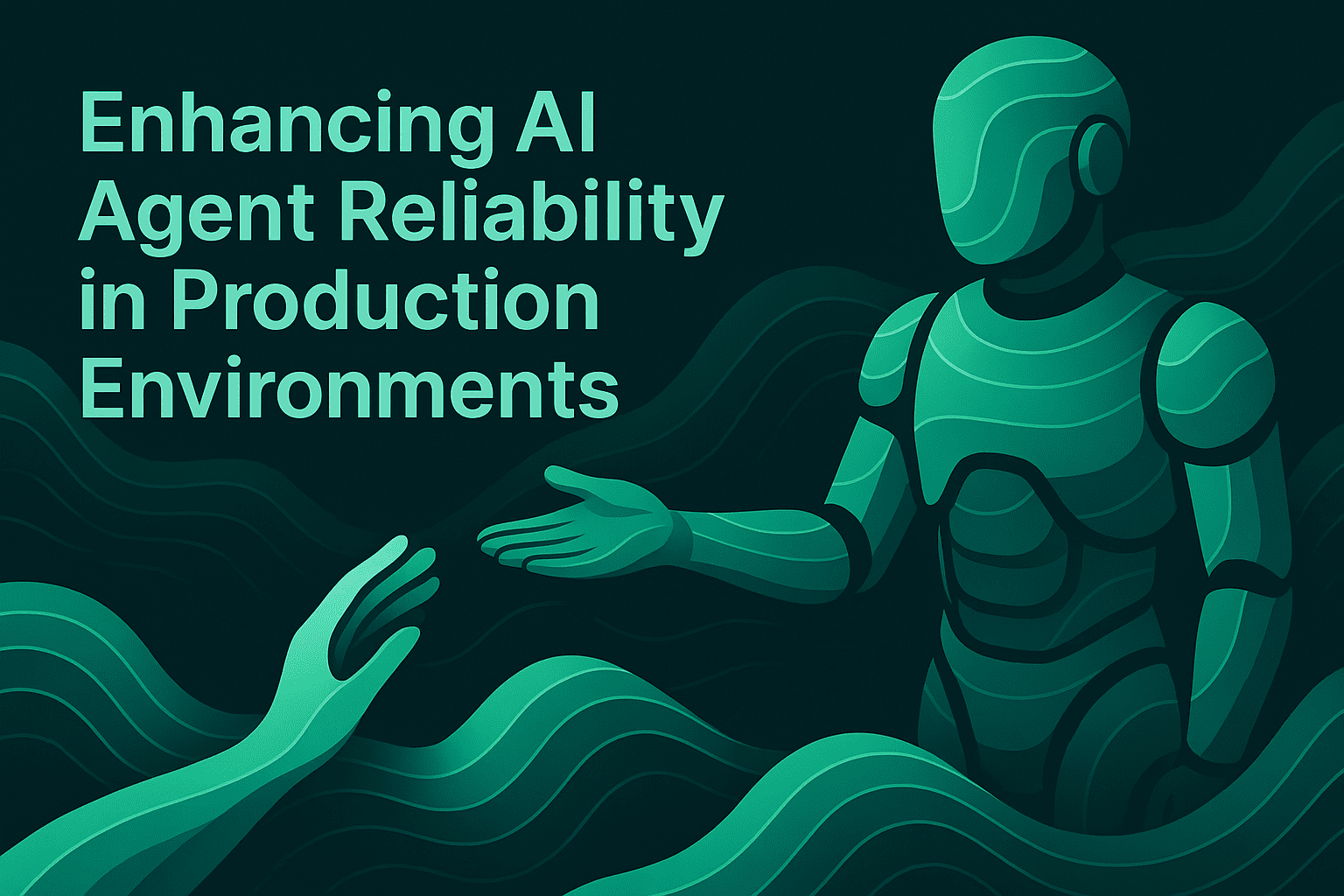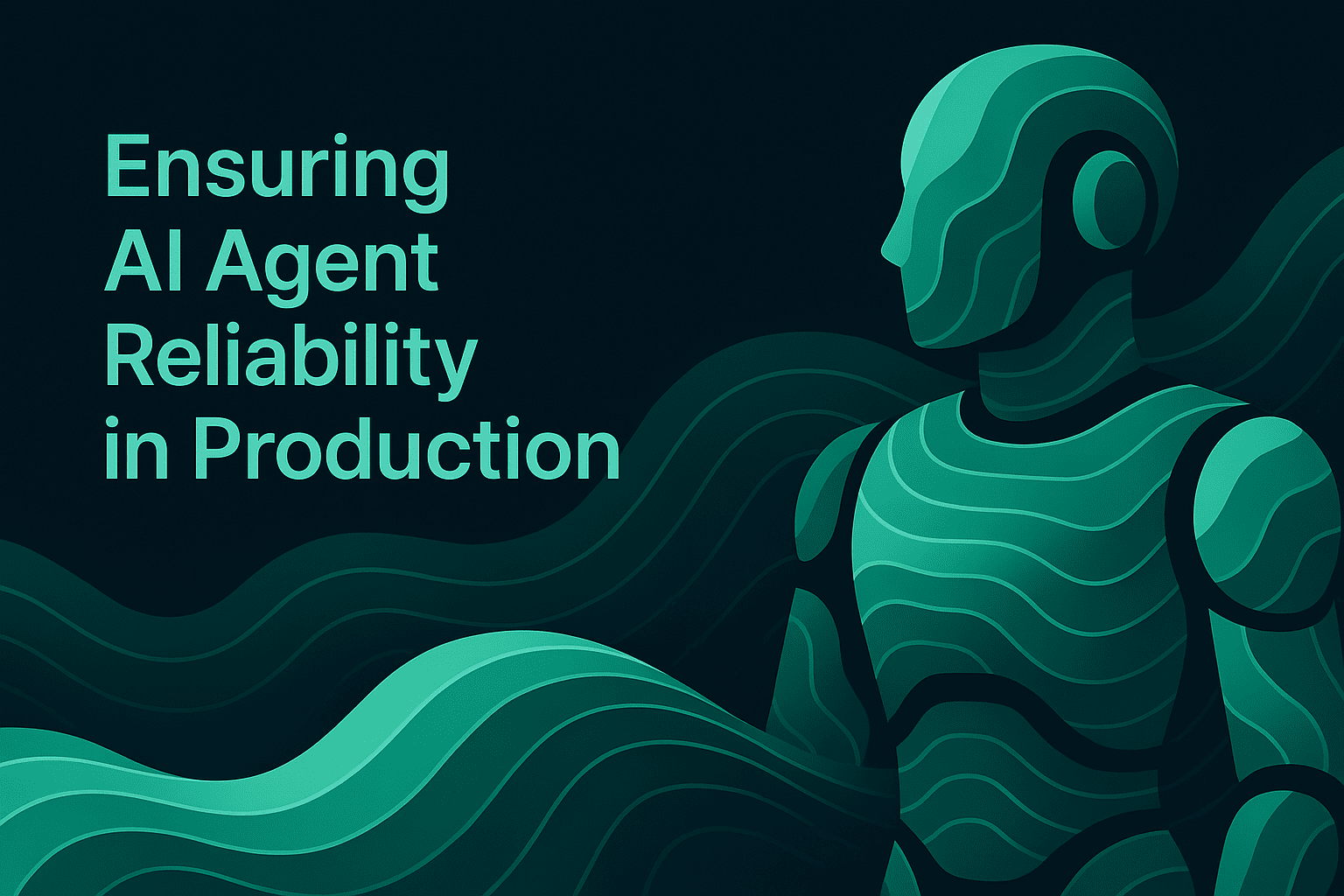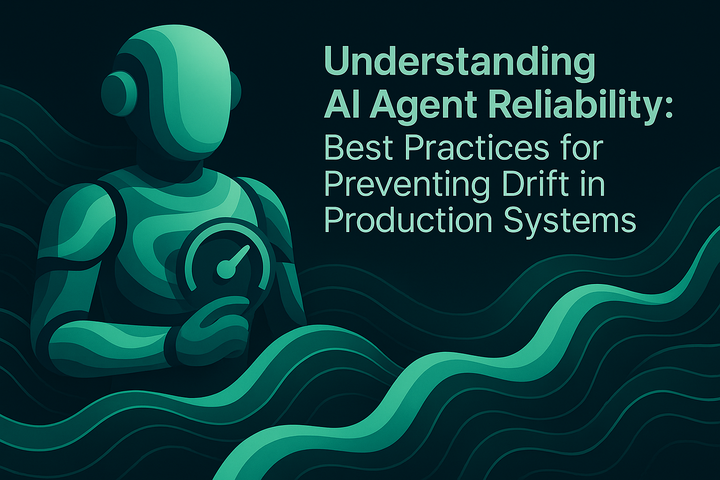How to Ensure Reliability in LLM Applications: A Comprehensive Guide

Large language model applications are rapidly moving from experimental prototypes to production systems serving millions of users. However, ensuring reliability in LLM applications presents unique challenges that traditional software engineering practices cannot fully address. According to research from Stanford's AI Index Report, 73% of organizations cite reliability concerns as a primary barrier to deploying AI applications at scale.
LLM reliability encompasses several dimensions: consistent output quality, predictable behavior across diverse inputs, graceful handling of edge cases, and maintaining performance within acceptable latency and cost parameters. This guide examines proven methods for building reliable LLM applications and how systematic evaluation and monitoring practices ensure production readiness.
Understanding Reliability Challenges in LLM Applications
LLM applications face distinct reliability challenges that differ fundamentally from traditional software systems. Non-deterministic outputs mean that identical inputs can produce varying responses, making traditional testing approaches insufficient. Research published in the Journal of Machine Learning Research demonstrates that LLM outputs can vary by up to 30% across runs with identical prompts and parameters, even with temperature set to zero.
Hallucination and factual accuracy represent critical reliability risks. Studies from Google DeepMind indicate that even state-of-the-art models hallucinate in 15-25% of responses when answering factual questions, with rates increasing significantly for domain-specific or time-sensitive information. These hallucinations can appear highly confident, making them difficult to detect without systematic evaluation.
Context handling limitations create reliability challenges as applications scale. LLM applications processing long documents, maintaining extended conversations, or implementing retrieval-augmented generation must manage context windows effectively. MIT research shows that model performance degrades significantly when relevant information appears in the middle of long contexts, with accuracy dropping by 20-40% compared to information at context boundaries.
Prompt sensitivity means that minor variations in prompt formulation can produce substantially different outputs. This brittleness makes LLM applications vulnerable to unexpected behavior when user inputs deviate from anticipated patterns or when prompts require updates for new use cases.
Establishing Systematic Testing Frameworks
Ensuring reliability begins with comprehensive pre-deployment testing that validates LLM behavior across representative scenarios. Organizations should implement AI simulation capabilities that test applications against hundreds of diverse user interactions before production release.
Scenario-based testing involves creating test suites that span common use cases, edge cases, adversarial inputs, and failure modes. According to research from Anthropic, comprehensive test coverage should include at least 500-1000 diverse scenarios to adequately stress-test LLM application behavior. Testing frameworks should evaluate not just successful cases but also how applications handle ambiguous requests, out-of-scope queries, and potentially harmful inputs.
Simulation with synthetic data enables teams to test application behavior across user personas and interaction patterns that may be rare in development environments but occur regularly in production. Agent simulation allows teams to model realistic user journeys, evaluate conversational trajectories, and identify failure points systematically before users encounter them.
Regression testing ensures that prompt modifications, model updates, or system changes do not degrade existing functionality. Organizations should establish baseline quality metrics and run automated regression suites whenever application components change, with clear acceptance criteria for deployment.
Implementing Comprehensive Evaluation Frameworks
Reliable LLM applications require multi-dimensional evaluation that measures quality, safety, and performance systematically. Research from Microsoft demonstrates that organizations using structured LLM evaluation frameworks detect 60-70% more quality issues before production deployment compared to ad-hoc testing approaches.
Automated evaluation using LLM-as-a-judge approaches enables scalable quality assessment across large test suites. Teams should implement custom evaluators that measure application-specific success criteria alongside general quality metrics like correctness, relevance, and conciseness. For complex multi-agent systems, evaluators should operate at session, trace, and span levels to provide granular visibility into component performance.
Human evaluation workflows remain essential for nuanced quality assessment that automated metrics cannot fully capture. Organizations should implement systematic human review processes that collect expert judgments on response quality, appropriateness, and alignment with user needs. Human evaluation data provides ground truth for calibrating automated evaluators and identifying edge cases requiring additional attention.
Hallucination detection must be integrated into evaluation frameworks to ensure factual reliability. Teams building RAG applications should implement faithfulness checks that verify generated content remains grounded in retrieved sources. For applications without external knowledge bases, consistency checks across multiple generations and fact-verification against trusted sources help identify unreliable outputs.
Production Monitoring and Observability
Reliability requires continuous monitoring that detects quality degradations, usage pattern shifts, and emerging failure modes in production environments. AI observability platforms provide visibility into real-time application behavior through distributed tracing, automated quality checks, and performance monitoring.
Real-time quality monitoring enables teams to detect and respond to issues before they impact significant user populations. Organizations should implement automated evaluations that run continuously on production traffic, measuring key quality metrics and triggering alerts when performance degrades below defined thresholds. Research from Allen Institute for AI indicates that real-time monitoring reduces mean time to detection for quality issues by 75% compared to reactive approaches based on user complaints.
Distributed tracing provides comprehensive visibility into multi-component LLM applications, capturing inputs, intermediate steps, and outputs across complex workflows. Agent tracing capabilities enable teams to debug issues by examining complete execution paths, identifying which components contribute to failures, and understanding how errors propagate through systems.
Cost and latency tracking ensures applications maintain acceptable performance characteristics. Reliable LLM applications must deliver responses within latency budgets while operating within cost constraints. AI monitoring tools should track token usage, model costs, and response times at granular levels, enabling teams to identify optimization opportunities and prevent cost overruns.
Ensuring Reliability with Maxim AI
Maxim AI provides an end-to-end platform for building reliable LLM applications through integrated experimentation, simulation, evaluation, and observability capabilities. The platform enables teams to validate application quality systematically before deployment and maintain reliability throughout the production lifecycle.
Maxim's Playground++ accelerates iteration on prompts and workflows, allowing teams to test different approaches and compare quality, cost, and latency side-by-side. The experimentation environment supports rapid prototyping while maintaining version control and tracking experiment results systematically.
Pre-deployment validation through AI-powered simulation enables teams to test applications across hundreds of scenarios and user personas. Teams can evaluate conversational trajectories, identify failure patterns, and iterate on application behavior before production release, significantly reducing the risk of quality issues reaching users.
Maxim's unified evaluation framework combines automated and human evaluation approaches, providing comprehensive quality assessment across multiple dimensions. The platform includes pre-built evaluators for common quality metrics alongside support for custom evaluators tailored to specific application requirements, with flexible configuration at session, trace, or span level for multi-agent systems.
Production reliability is maintained through continuous monitoring and observability that tracks quality metrics in real-time, detects anomalies, and provides distributed tracing for debugging complex issues. Teams can curate datasets directly from production logs, enabling continuous improvement through data-driven optimization.
Conclusion
Ensuring reliability in LLM applications requires systematic approaches spanning pre-deployment testing, comprehensive evaluation, and continuous production monitoring. Organizations that implement structured testing frameworks, multi-dimensional evaluation, and real-time observability significantly reduce quality incidents while accelerating development velocity.
Maxim AI provides integrated infrastructure for building reliable LLM applications, combining experimentation, simulation, evaluation, and observability in a unified platform designed for cross-functional collaboration. Teams using Maxim ship AI applications reliably and more than 5x faster through systematic quality management across the complete development lifecycle.
Start building reliable LLM applications with Maxim AI and ensure your AI systems meet production quality standards consistently.


